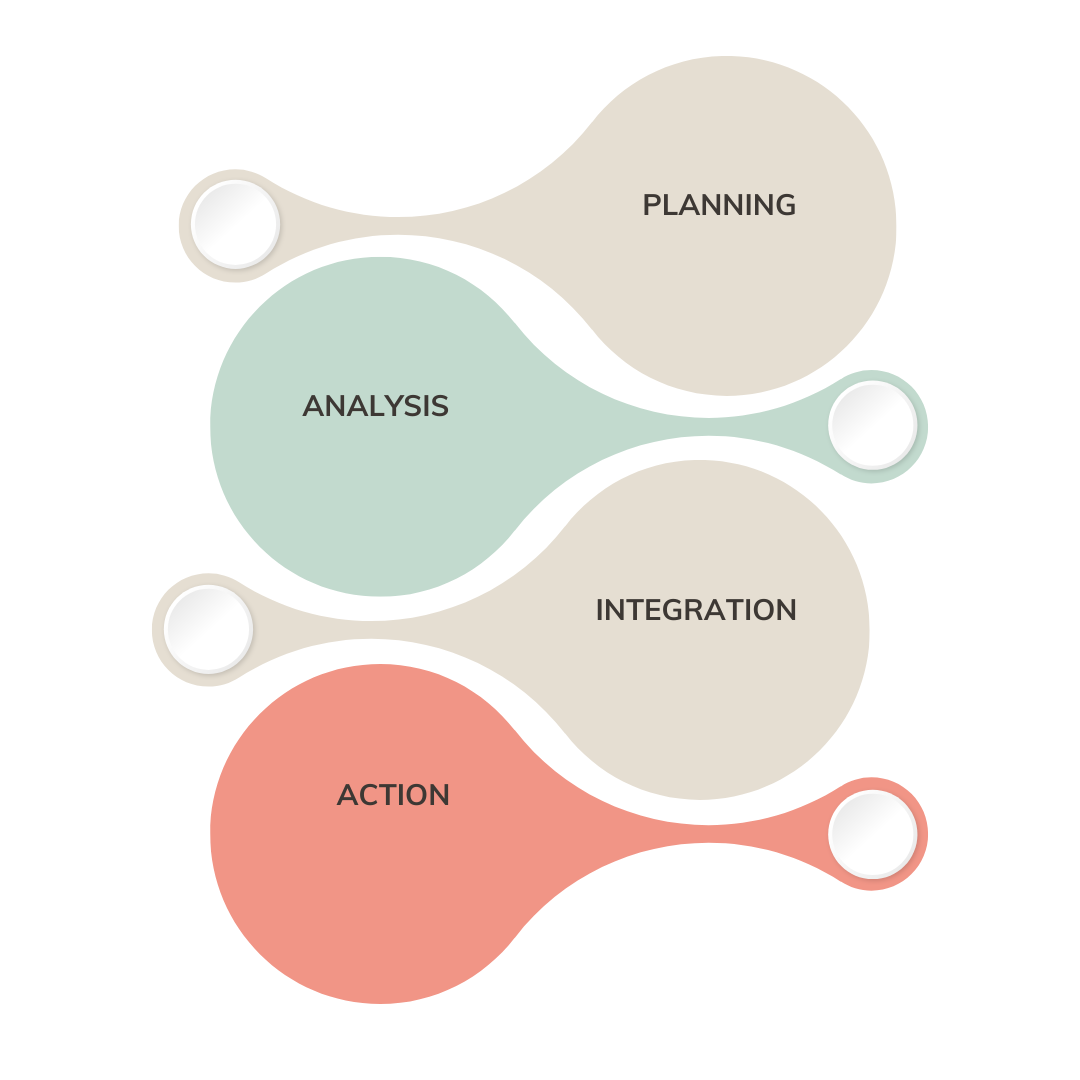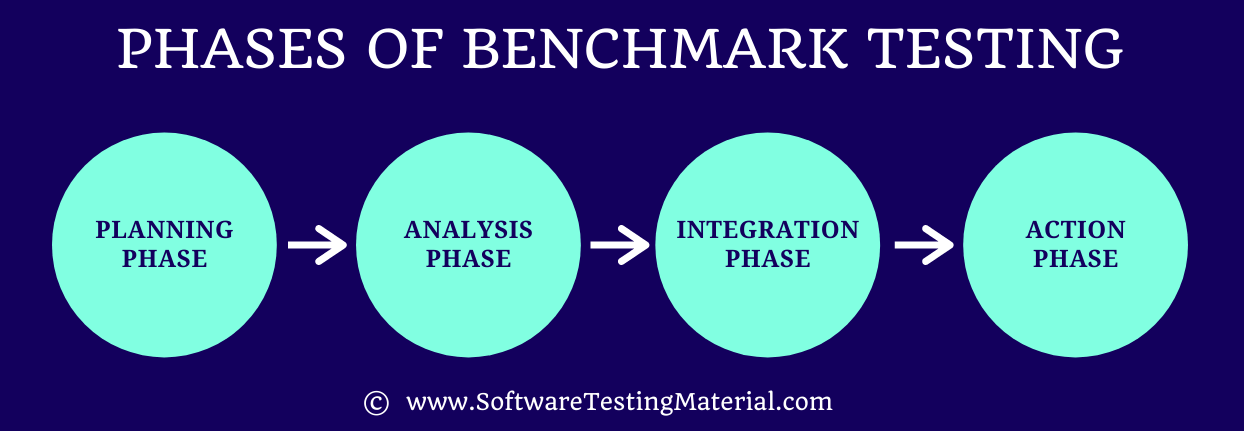Benchmark Testing in Software: The Key to Optimizing Performance
 Tvisha raji
Tvisha rajiTable of contents

Every software application undergoes rigorous functional and non-functional testing to meet business requirements. When we talk about delivering top-tier software, performance is key. How fast does it run? How stable is it under pressure? Can it scale with growing demand? Does it remain reliable when pushed to its limits?
These questions are at the core of performance testing, and that’s where benchmark testing steps into the spotlight. Let’s dive deeper into what benchmark testing entails and how it contributes to software excellence.

What is Benchmark Testing?
Benchmark testing, commonly referred to as benchmarking, is a method used to measure the performance of a software application, system, or component against predefined standards or metrics.
It involves executing a series of tests to evaluate various performance aspects, such as speed, efficiency, scalability, and stability, under specific conditions. The goal is to determine how well the software performs in comparison to industry standards, competitors, or previous versions of the software.
What is the purpose of Benchmark Testing?
The goal of benchmark testing is to ensure that the software meets or exceeds performance expectations. Here’s a detailed look at why benchmark testing is important :
Performance Verification
It helps verify that the software meets the necessary performance criteria, such as response times, throughput, and resource utilization.
Comparison Against Standards
Benchmark testing allows the software’s performance to be compared against industry standards or competitor products, helping to identify areas for improvement.
Optimization
By identifying performance bottlenecks, developers can focus on optimizing specific aspects of the software, such as code efficiency or resource management.
Ensuring Scalability and Reliability
Benchmark testing ensures that the software can scale effectively and remain reliable under increased load or stress conditions, which is critical for applications that must handle many users or transactions.
Continuous Improvement
It provides a baseline for performance, making it easier to measure the impact of changes or updates to the software.
What are the components of Benchmark Testing?
It involves several key components, each of which plays a crucial role in evaluating software performance:
Test Plan
A detailed plan outlines the objectives, scope, test environment, tools, and metrics used in the benchmark testing process.
Test Environment
A controlled setup that replicates the production environment as closely as possible. This includes hardware, software, network configurations, and any other dependencies.
Benchmarks/Standards
Predefined performance standards or metrics that the software will be measured against. These could be industry standards, competitive benchmarks, or custom benchmarks based on specific requirements.
Test Scenarios
Specific situations or conditions under which the software will be tested. This could include normal load conditions, peak load conditions, and stress scenarios.
Metrics Collection
Tools and techniques for collecting data on key performance indicators (KPIs) such as response time, CPU usage, memory consumption, and error rates.
Analysis and Reporting:
Detailed analysis of the collected data, identifying areas of concern, and reporting the results with actionable insights for optimization.
Types of Benchmark Testing
Performance Benchmarking
Measures the overall performance of the software, focusing on metrics like response time, throughput, and resource utilization under various load conditions.
Load Benchmarking
Evaluates how the software performs under a specific load, such as a certain number of concurrent users or transactions. It helps identify the software’s load-handling capacity.
Stress Benchmarking
Tests the software under extreme conditions, such as a sudden surge in users or data volume. The goal is to identify how the software behaves under stress and whether it remains stable and reliable.
Configuration Benchmarking
Compares the performance of the software under different configurations, such as different hardware setups, operating systems, or network conditions. This helps determine the optimal configuration for the best performance.
Competitor Benchmarking
Compares the software’s performance against that of competitors. This type of benchmarking helps identify areas where your software excels or lags behind the competition.
How to Do Benchmark Testing?

1. Define Objectives
Objective: Determine what you want to achieve with the benchmark testing.
Example: You are testing a new e-commerce website. Your objective might be to improve the website’s response time during peak traffic hours to enhance user experience and reduce cart abandonment rates.
2. Select Benchmarks
Benchmark: Choose performance standards or metrics for comparison.
Example: For your e-commerce website, you might select benchmarks such as:
Response time should be under 2 seconds for 95% of requests.
The system should handle 1,000 concurrent users without performance degradation.
The website should support a transaction throughput of 500 transactions per minute.
3. Set Up the Test Environment
Environment Setup: Create a test environment that mirrors the production environment as closely as possible.
Example: If your production environment consists of a cloud-based server cluster with 16 CPUs, 64GB of RAM, and a load balancer, your test environment should have the same configuration. This includes:
Using the same server specifications and configurations.
Implementing similar network settings and security configurations.
Setting up the same software versions and configurations as in production.
4. Develop Test Scenarios
Test Scenarios: Create scenarios that reflect real-world usage conditions.
Example: For your e-commerce website, you might develop scenarios such as:
Normal Load Scenario: Simulate 100 concurrent users browsing the site, adding items to their cart, and proceeding to checkout.
Peak Load Scenario: Simulate 1,000 concurrent users during a sale event, including high traffic on product pages and checkout processes.
Stress Test Scenario: Push the system to its limits by simulating 2,000 concurrent users and observing how the system handles it.
Best Practices
Define Clear Objectives
Before starting, ensure that the objectives of the benchmark testing are well-defined and aligned with business goals.
Replicate Real-World Conditions
Ensure that the test environment closely mirrors the production environment, and that test scenarios simulate real-world usage conditions.
Use Reliable Tools
Choose reliable benchmarking tools that provide accurate and consistent results. Ensure that the tools are properly configured and maintained.
Real-Life Use Case: Benchmark Testing for an E-commerce Platform
Scenario: A large e-commerce platform is preparing for the annual Black Friday sale, expecting a significant increase in traffic. The company wants to ensure that its website and backend systems can handle the expected load without crashing or slowing down, which could result in lost sales and a poor customer experience.
Objectives:
Performance Verification: Ensure the website can handle up to 10 times the usual traffic during peak sale hours.
Load Benchmarking: Assess how many concurrent users the platform can support before performance degrades.
Stress Benchmarking: Identify the breaking point of the system by simulating an extreme surge in traffic.
Configuration Benchmarking: Test different server configurations to find the optimal setup that provides the best performance under load.
Implementation:
Define Objectives: The team set specific goals, such as maintaining a page load time of under 2 seconds for up to 500,000 concurrent users.
Select Benchmarks: They chose industry-standard metrics for response time, throughput, and error rates.
Set Up the Test Environment: A staging environment identical to production was set up, with the same servers, database configurations, and network settings.
Develop Test Scenarios: The team created scenarios simulating normal shopping activity, peak traffic during the sale, and a sudden spike in users.
Execute Benchmark Tests: Using tools like Apache JMeter and Gatling, the team ran the tests, gradually increasing the load to identify performance bottlenecks and the maximum capacity of the system.
Results:
Performance Verification: The platform successfully handled up to 400,000 concurrent users with a page load time under 2 seconds.
Load Benchmarking: The system maintained performance up to 450,000 users, beyond which response times began to degrade.
Stress Benchmarking: The system's breaking point was identified at 550,000 concurrent users, where the server response time increased significantly, and some transactions failed.
Configuration Benchmarking: A specific server configuration was identified that improved performance by 20% under high load conditions.
Outcome: The benchmark testing provided critical insights that allowed the e-commerce platform to optimize its infrastructure, ensuring a smooth and reliable user experience during the Black Friday sale. As a result, the company saw record sales with minimal downtime, reinforcing the importance of thorough benchmark testing in high-stakes scenarios.
Tools to use for Benchmark Testing
| Tool | Description | Strengths | Limitations | Use Case |
| Keploy | An open-source testing platform focused on API testing and mocking, providing tools for automatic test generation and performance benchmarks. | API-centric testing. Auto-generates test cases. Built-in support for mocking. | Primarily focused on APIs. Still maturing compared to other tools. | Best for API performance testing and mock generation in microservices and cloud-native environments. |
| Gatling | An open-source load testing tool designed for web applications, known for high performance and handling large-scale tests. | High performance. Handles large-scale tests well. Code-based scenarios in Scala. | Requires knowledge of Scala for complex scripting. Limited protocol support. | Best for web application performance testing, especially for teams familiar with Scala. |
| Apache JMeter | A widely-used open-source tool for load and performance testing. Supports various protocols and can simulate heavy loads. | Open-source and free. Extensive protocol support. Strong community support. | GUI can be resource-intensive. Steeper learning curve for complex scenarios. | Ideal for comprehensive performance testing across different protocols and environments. |
| LoadRunner | A comprehensive performance testing tool from Micro Focus supporting a wide range of applications and protocols. | Enterprise-level support. Simulates thousands of users. Detailed analytics. | Expensive licensing. Requires more resources to set up and maintain. | Suitable for large enterprises needing detailed performance analytics and testing at scale. |
| Siege | A command-line utility for benchmarking web servers, designed to stress test by placing a server under load. | Lightweight and easy to use. Command-line interface. Quick setup. | Limited to HTTP/HTTPS. Basic reporting and analytics. | Useful for quick and simple web server benchmarking and stress testing. |
Conclusion
By simulating various load conditions, identifying bottlenecks, and comparing performance against industry standards or competitors, organizations can make informed decisions to optimize their systems.
FAQ
What is benchmark testing, and why is it important?
Benchmark testing is a method used to measure the performance of software applications, systems, or components against predefined standards or metrics. It is important because it helps ensure that the software meets performance expectations, identifies areas for optimization, and verifies the scalability and reliability of the system under various conditions.
How does benchmark testing differ from other types of performance testing?
While all performance testing evaluates how software performs under certain conditions, benchmark testing specifically compares software performance against predefined benchmarks, industry standards, or competitor products. Other types of performance testing, such as load, stress, and configuration testing, focus more on understanding system behavior under specific scenarios or loads rather than direct comparison against a standard.
What are some common benchmarks used in benchmark testing?
Common benchmarks used in benchmark testing include response time, throughput, resource utilization (CPU, memory), error rates, and transaction per minute (TPM). These benchmarks can be tailored to specific performance goals or industry standards.
What is the role of a test environment in benchmark testing?
The test environment in benchmark testing replicates the production environment as closely as possible to ensure accurate and reliable test results. This includes matching hardware, software, network configurations, and other dependencies to the production setup. A well-matched test environment helps identify performance issues that would likely occur in real-world usage.
How can benchmark testing improve software performance?
Benchmark testing improves software performance by identifying bottlenecks and inefficiencies. By comparing performance data against predefined benchmarks, developers can pinpoint areas that need optimization, such as code efficiency, resource management, or configuration adjustments, leading to enhanced overall performance.
Subscribe to my newsletter
Read articles from Tvisha raji directly inside your inbox. Subscribe to the newsletter, and don't miss out.
Written by
